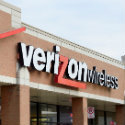
In March, Verizon released its plan to spend an extra $10 billion over the next three years in order to deliver 5G services over its new C-band spectrum licenses to up to 250 million Americans by 2024.
And in recent weeks, the details of that project have begun hitting the market.
For example, Verizon's Ed Chan told a recent investor event that Verizon doesn't expect to get early access to the B and C Block portions of the C-band spectrum licenses it purchased earlier this year. If that situation holds, it means Verizon won't be able to expand its C-band network until 2023.
Verizon "is not overly optimistic" about getting early access to the spectrum, "but will look for opportunity if it's there," according to the financial analysts at Cowen, who detailed Chan's comments last week. A Verizon spokesperson did not respond to questions from Light Reading about the situation.
At issue are the three different "blocks" of spectrum that were released during the FCC's blockbuster C-band spectrum auction for 5G earlier this year. A Block licenses in the auction generated much higher bids because they will be available for commercial use at the end of this year. However, the remainder of the licenses – scattered across the B and C Blocks – aren't scheduled to be available for commercial use until 2023.
That's because the satellite companies currently using the spectrum need to modify their operations to release the C-band for 5G. They agreed to release the A Block early, but they said more work would be needed to release the B and C Blocks.
Based on Chan's comments, it appears the satellite companies may not be able to relinquish the C-band any more quickly than they previously indicated.
CBRS plus C-band
In other C-band commentary, Chan said that Verizon will also throw in some 3.5GHz CBRS action into its C-band efforts. According to the Cowen analysts, he said Verizon would upgrade some of its cell towers with both C-band and CBRS capabilities at the same time, essentially killing two birds with one stone. However, he said that Verizon will only do so in dense, urban areas where CBRS transmissions make sense.
Verizon so far has been using CBRS spectrum only for 4G. But Verizon's Adam Koeppe confirmed to Light Reading earlier this year that the operator will be able to activate 5G signals on its CBRS equipment later this year via a software upgrade.
Chan's comments are noteworthy considering Verizon last year spent $1.9 billion to purchase CBRS spectrum licenses across the country in an FCC auction. As Light Reading reported in 2019, Verizon has been adding support for the 3.5GHz CBRS spectrum band to its network for years.
Buildout remains on track
Verizon agreed to spend roughly $50 billion earlier this year on midband C-band spectrum licenses for 5G. Such spectrum has become highly valued as it supports both broad geographic coverage as well as lightning fast speeds.
Verizon has said it plans to upgrade 7,000 to 8,000 of its estimated 64,000 cell towers with C-band radios supplied by vendors Samsung and Ericsson in order to cover around 100 million Americans with C-band 5G service by March of 2022. As Verizon gets access to more of its C-band spectrum licenses, including the B and C Blocks, it will ultimately expand that coverage to 250 million people by 2024.
"We are on track on all the deployment that we committed for the year," Verizon CEO Hans Vestberg told a recent investor conference, according to a transcript of the event supplied by Verizon. "We have started with the C-band."
Vestberg added that Verizon has already sold 10 million smartphones with C-band capabilities, gadgets that will be able to access the speedy midband spectrum when Verizon activates it.
Related posts:
— Mike Dano, Editorial Director, 5G & Mobile Strategies, Light Reading | @mikeddano
About the Author(s)
You May Also Like



.jpg?width=300&auto=webp&quality=80&disable=upscale)








